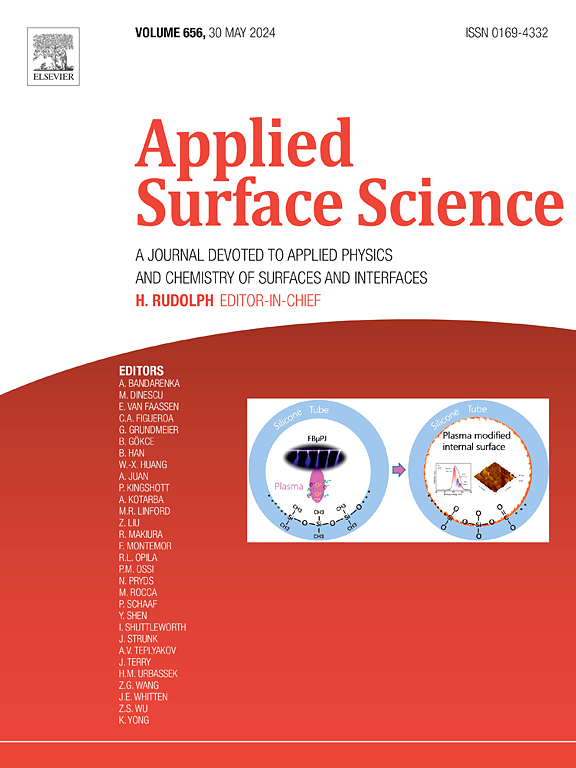利用第一性原理和机器学习揭示g-SiC/Nb2CO2异质结构作为锂/钠离子存储阳极的电化学性能
IF 6.3
2区 材料科学
Q2 CHEMISTRY, PHYSICAL
引用次数: 0
摘要
异质结通过界面结构、电荷耦合和相互作用调控,在比容量、倍率性能和使用寿命等性能方面取得了一些突破,成为高性能电极材料的关键调控手段。本文通过第一性原理计算和机器学习,建立了g-SiC与Nb2CO2的异质结,系统地预测了其电化学性能。基于300 K的AIMD模拟结果,发现异质结既没有结构变形,也没有键断,表现出良好的热力学稳定性。此外,Li和Na迁移的最低扩散势垒分别为0.58 eV和0.27 eV,开路电压分别降低0.97 V和0.18 V,理论比容量分别为910.54 mAh/g和505.86 mAh/g。这些结果表明,g-SiC/Nb2CO2是一种很有前途的锂/钠电池负极材料。同时,结合原子作为机器学习描述符的特征和物理性质,探索其对吸附性能的关键影响,为未来高性能金属离子电池负极材料的设计提供有价值的见解。本文章由计算机程序翻译,如有差异,请以英文原文为准。

Unlock the electrochemical performance of g-SiC/Nb2CO2 heterostructure as lithium/sodium ion storage anode with first-principles and machine learning
Heterojunction has achieved some breakthroughs in the performance aspects such as specific capacity, rate performance and service life through interface structure, charge coupling and interaction regulation, and has become a key regulatory means for high-performance electrode materials. Herein, a heterojunction combined g-SiC with Nb2CO2 is established to systematically predict the electrochemical properties through first-principles calculations and machine learning. Based on the results of AIMD simulation at 300 K, it is found that the heterojunction has neither structural deformation nor bond breakage, revealing good thermodynamic stability. Moreover, the lowest diffusion barriers of Li and Na migration are 0.58 eV and 0.27 eV, with the open circuit voltage lowered 0.97 V and 0.18 V, and theoretical specific capacities of 910.54 mAh/g and 505.86 mAh/g, respectively. These findings indicate that g-SiC/Nb2CO2 is a promising anode material for Li/Na batteries. Meanwhile, combining the characteristics and physical properties of atoms as descriptors for machine learning, their key influence on adsorption performance is explored, which provides valuable insights for the design of anode materials toward high-performance metal ion batteries in the future.
求助全文
通过发布文献求助,成功后即可免费获取论文全文。
去求助
来源期刊

Applied Surface Science
工程技术-材料科学:膜
CiteScore
12.50
自引率
7.50%
发文量
3393
审稿时长
67 days
期刊介绍:
Applied Surface Science covers topics contributing to a better understanding of surfaces, interfaces, nanostructures and their applications. The journal is concerned with scientific research on the atomic and molecular level of material properties determined with specific surface analytical techniques and/or computational methods, as well as the processing of such structures.
 求助内容:
求助内容: 应助结果提醒方式:
应助结果提醒方式:


